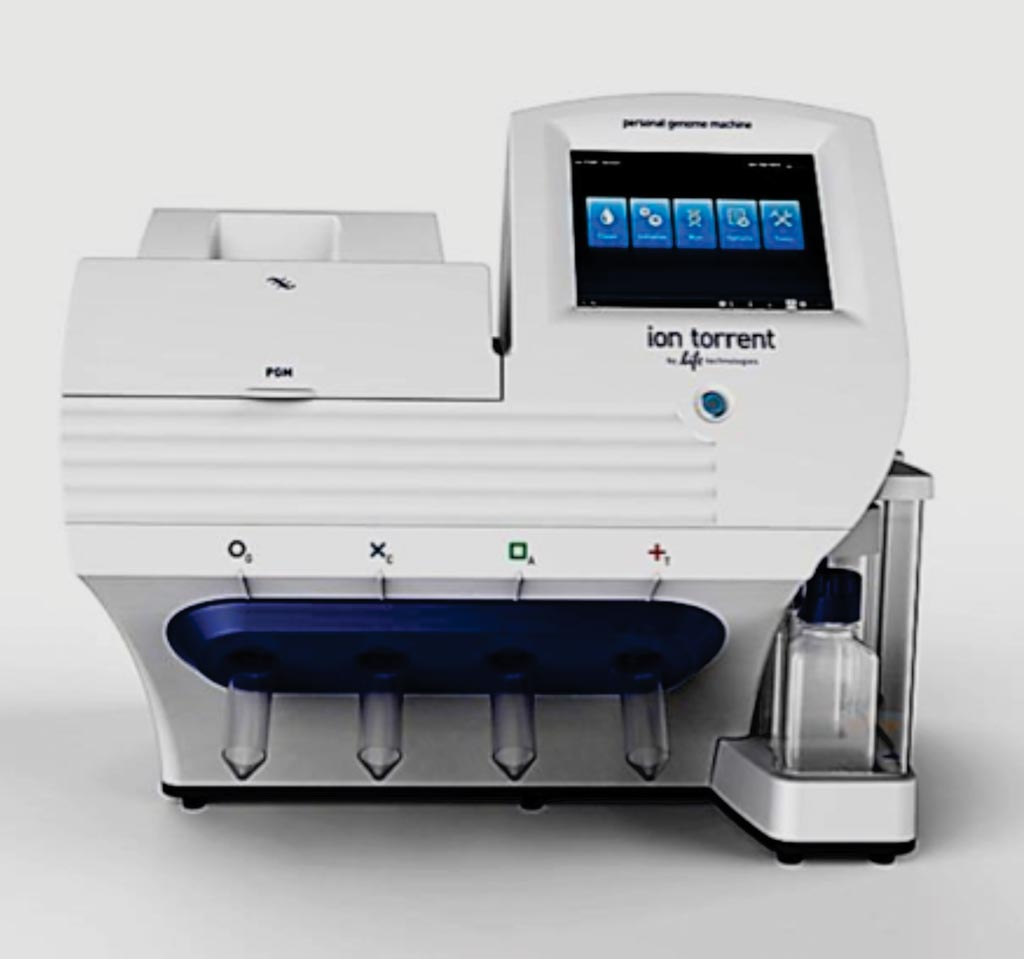Gut Microbiome Analysis Predicts Hospitalizations in Cirrhosis
By LabMedica International staff writers
Posted on 11 Apr 2018
Cirrhosis is a leading cause of mortality and healthcare expenditure due to hospitalizations worldwide. Bacterial products such as endotoxin play a key role in the development of a proinflammatory milieu and disease progression in cirrhosis.Posted on 11 Apr 2018
Specifically, the development of hepatic encephalopathy (HE) and spontaneous bacterial peritonitis (SBP) has a strong gut-based origin. A growing body of literature has linked gut microbial DNA results with negative outcomes in cirrhosis.

Image: The Ion Personal Genome Machine (PGM) System combines semiconductor sequencing technology with natural biochemistry to directly translate chemical information into digital data (Photo courtesy of Thermo Fisher Scientific).
Scientists at the Virginia Commonwealth University (Richmond, VA, USA) and their colleagues carried out a prospective study of patients with cirrhosis defined through biopsy, features of decompensation, endoscopic or radiological evidence of varices or cirrhosis in the setting of chronic liver disease. Stool collection for DNA and RNA was performed using Parapak and stool was stored in RNAlater until it was ultimately extracted.
The reverse bacterial 16S primer (1492R) was used to make the cDNA. Both DNA and cDNA were used in polymerase chain reaction (PCRs) with universal bacterial primers for the first two variable regions L27F and 355R. DNA or cDNA was amplified by PCR for sequencing using Ion Torrent technology. Prepared diluted samples were separated on an ABI 3130xl fluorescent capillary sequencer.
The team included 26 controls and 154 cirrhotics including 54 infected, 62 decompensated, 20 renal dysfunctions, and 18 treated with rifaximin in the study. RNA and DNA analysis showed differing potentially pathogenic taxa but similar autochthonous taxa composition. Thirty subjects underwent the omeprazole study, which demonstrated differences between RNA and DNA changes. Thirty-six patients were hospitalized within 90 days. In the RNA model, Model for End-Stage Liver Disease (MELD) score and Enterococcus were independently predictive of hospitalizations, while in the DNA model MELD was predictive and Roseburia protective. In both models, adding microbiota significantly added to the MELD score in predicting hospitalizations.
Jasmohan Bajaj, MD, the lead author of the study, said, “The hospitalizations that take place with cirrhosis are exorbitantly expensive. Anything that helps us predict the likelihood of hospitalization is better than the status quo. One of the major sources of inflammation in patients with cirrhosis or individuals who are obese is pathogenic bacteria, so, we began looking at gut microbes. People with cirrhosis who are hospitalized tend to get a very big inflammatory surge in their body because of infections and other organ failures.” The study was published on March 8, 2018, in the journal JCI Insight.
Related Links:
Virginia Commonwealth University













